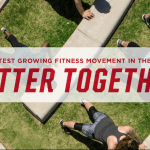Whether it’s an Apple Watch, Fitbit or Garmin, it seems that most of us have some sort of heart rate (HR) monitor strapped to our wrists. These fancy devices that not only tell us the time are great for monitoring how many steps we complete in a day, how much sleep we get, and also remind us to move when we have become too sedentary.

But what if I told you that by using its features correctly, you could actually improve your health and potentially increase your lifespan! In this article, I wish to discuss how to monitor your heart rate, ways to decrease your resting heart rate (RHR), and why it’s so important to make sure that we exercise our heart as much as the glamour muscles (biceps and abs). When we exercise our heart, we aim to make it stronger and thus allow us to potentially live longer.
The heart is a muscular organ that is responsible for circulating blood throughout the body and works with the respiratory system to deliver adequate oxygen supply to our entire body. It does this by continuously beating to pump blood from inside the heart chambers, out through the arteries, and back to the heart via our veins. This sophisticated biological process is ultimately what our HR monitors capture and display on the screen in a matter of seconds. HR may differ depending on your age, activity level, stress level, medications, and even if you are sitting or lying down.
There are two things that you should vitally know when you are trying to improve your HR/cardiovascular endurance. This is your resting heart rate (RHR) and your maximum heart rate (MHR).
Your RHR is simply that, your HR at pure rest. According to literature, a normal RHR can range between 60-90 beats per minute. This range is generally lower for athletes and those that participate in regular exercise. The American Heart Association (AHA) advises a RHR over 100 beats per minute indicates that the heart is having to work much harder to adequately supply the body with blood. This leads to an increased risk of cardiac disease and other serious health conditions. The best time to take your RHR is in the morning before getting out of bed. If you do not have a heart rate monitor, you can use your middle and index finger to find your pulse on the lateral border of your wrist. Count the beats for 10 seconds, then multiply this by six to obtain your HR/minute.
The most basic way to measure your MHR is to subtract your age (in years) from 220. For example, someone who is 30 has a maximum predicted HR of 190. Exercising whilst in your MHR zone is not advised for prolonged periods; however, it is not necessarily catastrophic if you are generally fit and healthy. The AHA recommends that exercising within 50-85 percent of your predicted maximum is enough to provide safe stress on the heart muscles that will, in turn, assist with improving your HR over time.
As a personal trainer and an advocate for health and wellness, I believe that any exercise is better than no exercise at all. However, in order to make physiological adaptations, we must expose the body to a small amount of stress in order to improve our overall health. Basically, if you are too conservative with your exercise methods then you may be putting in the time but not getting the results you are after. During every workout, try and push yourself to reach 50-85 percent of your MHR.
Other ways to reduce your HR include reducing stress, quitting smoking, reducing the consumption of stimulant-type substances (like coffee and pre-workouts), and reducing body fat (if applicable).
If you are looking for a fitness class/community to help you improve your HR in a fun yet challenging way, then be sure to look up Camp Gladiator in your local Lake Nona area. Times, locations and contact details are listed below.
Disclaimer: Please note that the above information is targeted at those who are not pregnant or are not taking beta-blockers or other medications that might impact cardiac function. If you are suffering from cardiac disease/symptoms, please seek medical clarification on how to improve your HR.
Camp Gladiator Location & Times
- Lake Nona Family Dentistry – Monday, Tuesday, Thursday 5:15 a.m.
- Spring of Life United Methodist Church – Tuesday, Thursday 5:45 p.m.
- Moss Park Elementary School – Monday, Wednesday 6:30 p.m.

Vernice Salveron-Gasper
Primary Trainer/Occupational Therapist
Phone: 321-947-9948
Like Camp Gladiator on Facebook and follow @campGladiator on Instagram for exclusive offers, fitness tips, pictures, events, camp updates and more! Visit the website at campGladiator.com.
“To positively impact the physical fitness and ultimately the lives of as many people as possible.”
– Camp Gladiator



